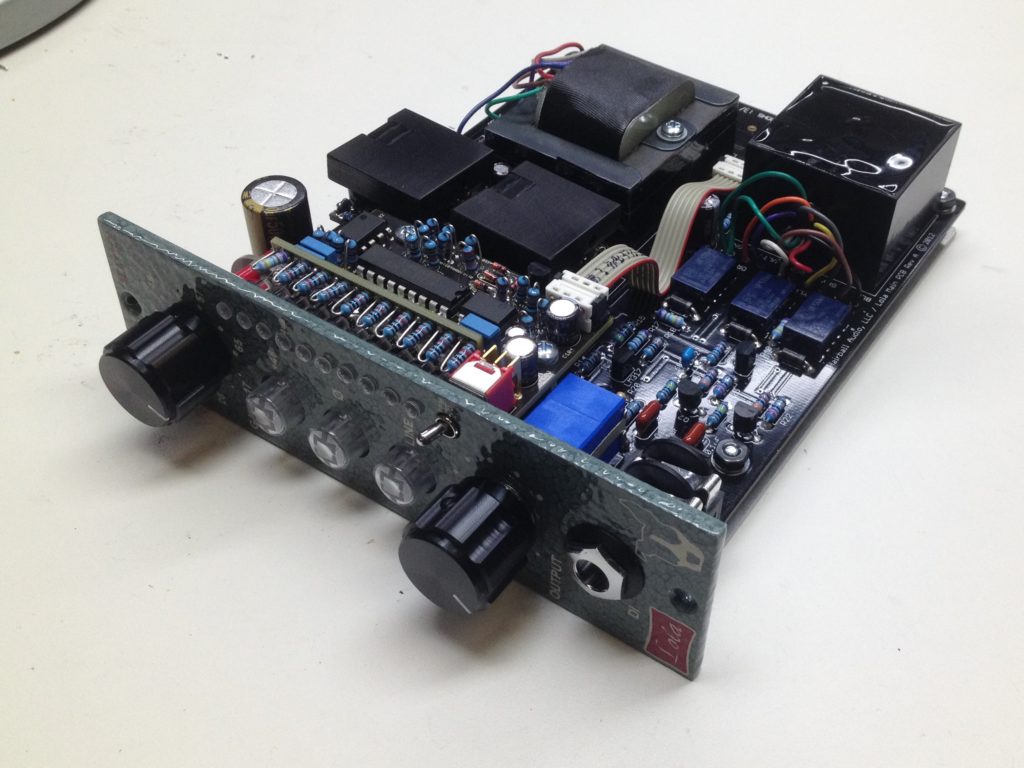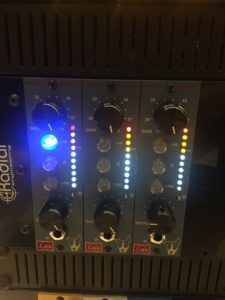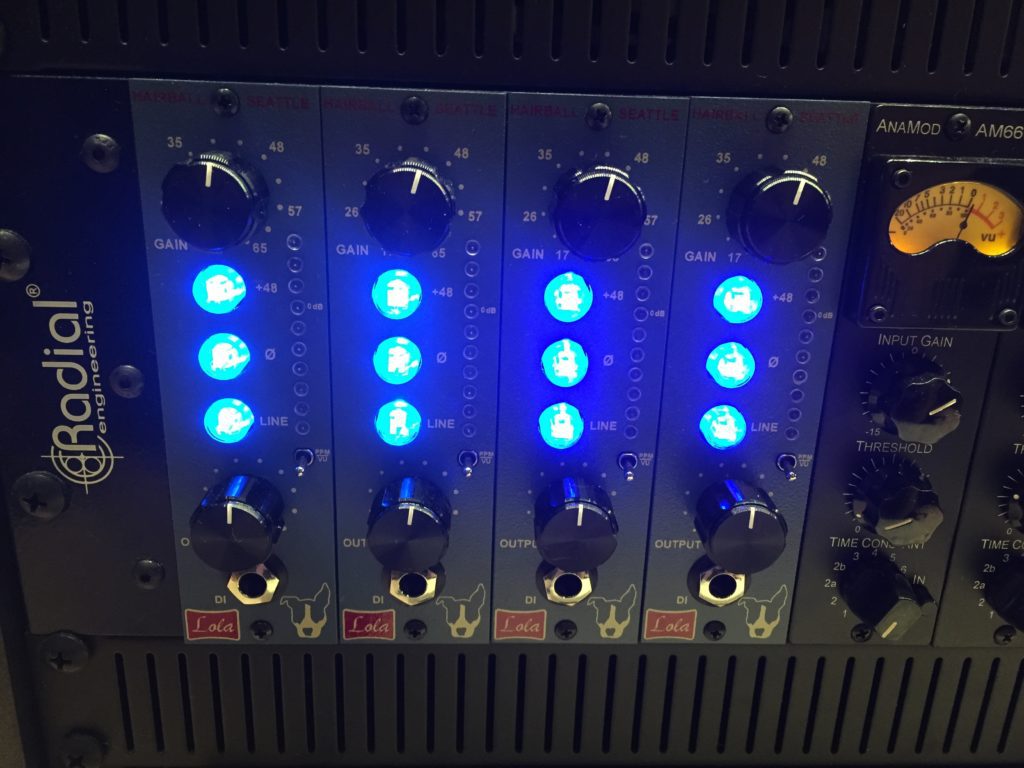This week I’m building the last two of our four-unit set of Lola mic preamps from Hairball Audio. I suppose I should be feeling a little nostalgic to finally be finishing these units. I built my first two Lola units about 2 years ago, and they were the first 500 series modules I built. Our rack has come a long way since then! I’ve built 14 modules since then, and our rack is filling out very nicely.
I tend to buy one of a particular DIY kit to try it out first, and if I like it, I’ll buy and build one or more of that same kind of unit. Usually the magic number is two, enough to get a stereo pair if the need arises, but in the case of the Lola, I eventually decided I wanted four. More on that in a moment.
Hairball Audio in Seattle is the same company behind a number of kits I’ve already added to our rack — the four FET/500 1176 compressors, and the two Elements Bronze preamps I’ve told you about here on the blog. But the funny thing is that it was my experience with building that first Lola a couple years back that sold me on Hairball’s other kits.
So to review the thread: Lolas #1-2 were fun to build, which led me to want to try their 1176 clone kits, which led me to try building a couple of Elements preamps…and it’s only now after I’ve built all those that I’m finally getting around to building out the remainder of the Lolas I’ve had on the to-do list since I built the first ones.
I shot myself in the foot somewhat by waiting a couple years between building my first and last Lola units, though. My first two units were the “1.0” units Hairball put out, and in some respects I liked it a little better. The original units had a different powdercoat on them, a style that a reviewer from TapeOp Magazine described as “a hammered, metallic-jade finish reminiscent of your uncle’s hunting thermos;” the one your uncle insisted “was for ‘coffee’ but always smelled like jet fuel.”

As cool as those units looked, the rough surface was giving Hairball’s silkscreen printer fits, and they changed it to a smoother, powder blue color. The original units also had very unusual LED colors — purple, white and amber — which looked really cool in operation but were admittedly a little hard to decode from across the room. The new units have a red “clip” light at the top of the LED ladder, which is a little easier to spot and, admittedly, does a better job of warning me that I’m overcooking something.

So since I am a sucker for aesthetics, I wrote to Hairball and asked for a sort of “conversion kit” to let me rework my older Lola units They sent me the new style faceplates and the LEDs to rebuild the LED ladders so that all four of my units would display the same way. The modifications were tricky because of the amount of desoldering involved, but I eventually got everything put back together and working.
So why four Lolas?
On the strength of that TapeOp review, the Lola seemed like a really good piece of hardware to keep around. The reviewer says the Lola is now his go-to amp for recording bass guitar, and in my limited experience with my one Lola thus far, I found myself in violent agreement on that point — it sounds great on bass. As far as preamp “flavors” go, unlike a lot of the other pieces I’ve built, which are attempting to emulate a piece of classic gear, the Lola is not based on some old design. So it’s another variety of spice for us to have in the toolbox. But TapeOp’s guy was most effusive about the way the Lola paired with the Sennheiser MD421 on tom drums:
[sws_blockquote_endquote align=”right” cite=”Garrett Haines, TapeOp Magazine, Jan/Feb 2013″ quotestyle=”style02″] Speaking of dynamic mics, Lola with a Sennheiser MD 421 on tom tom was ridiculous, like playing basketball against a pack of six year olds. And an entire drum set tracked through Lolas would probably make listeners stop and ask, “What’s going on here? Is there a giant playing in this band?” [/sws_blockquote_endquote]
So my thinking was that most drum sets have three toms (although sometimes it’s four). If we wind up recording bass and a normal-size kit at the same time, we’d be set up to use a Lola on each of the toms, while still having one more available for the bass player. Of course, if we get some guy who comes in with a 7-tom kit like Neil Peart, we’ll make other arrangements.
That’s a nice problem to have, honestly. One I hope we have to encounter at some point in the future.
Update: read about our adventures with the Sennheiser MD421 and the microphone clip that gives audio people fits.


